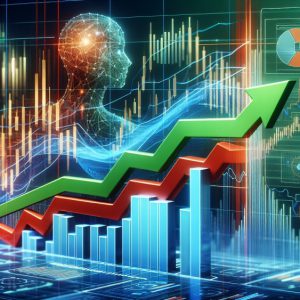
He who thinks he is raising a mound may only, in reality, be digging a pit. Ernest Bramah
Dr Copper’s correlation with the economy
Updated Jan 2024
In recent times, copper has been signalling a more robust economy despite its breakdown as a leading indicator for the stock market. The name “Dr. Copper” seems fitting, given its importance as a barometer of global economic health. In today’s changing economic landscape, copper’s role is challenged by Fed intervention and mass psychology, with hot money driving markets higher while basic technical analysis and fundamentals are ignored.
As the psychology of the masses drives markets, investors need to pay attention to the divergence between this metal and the markets. Although copper’s negative year in 2022 reflects slower growth in China and a stronger dollar, the metal has been recovering as investors flock to cyclical metals in response to a lower USD and rising prospects for a reopening in China. While demand and supply are projected to balance out next year, low copper stockpiles imply that any unexpected consumption or production shock might cause massive price swings.
Despite the potential downside risk of a US recession, copper demand may increase if China’s economic recovery gains steam, with restocking activity driving prices higher. Moreover, copper is likely to play a more significant role in the decarbonization and net zero energy transition trend, as every renewable energy source needs copper for electrification and transmission. With large speculators transitioning to net-long positions and copper breaking over the $4.00 resistance level, the potential upside for 2023 seems slightly more significant than the downside.
A copper deficit is set to inundate global markets throughout 2023, fueled by increasingly challenged South American supply streams and escalating demand pressures. The deficit may last until a potential global economic recession is caused by the current headwinds from 2024 to 2025. This aligns with a report from McKinsey, which states that copper shortfalls could last until 2030.
In summary, while its role as a leading indicator for the stock market may be challenged, its importance as a barometer of global economic health remains undeniable. The potential for a deficit, driven by strained supply streams and escalating demand pressures, suggests that the copper market will continue to be a key area to watch in the coming years.
Copper and the Economy: No Longer Two Peas in a Pod
Once a leading indicator of economic growth, copper is back in action. Despite copper’s dismal performance over the years and its failure to signal a strong economy, copper’s recent price surge suggests a changing market dynamic.
Investors should pay attention to the mass psychology driving the market, with the acceptance of Fed intervention as the new norm. As the markets continue to rise due to the hot money fueled by low interest rates, investors should focus on the psychology of the masses rather than fundamentals or basic technical analysis.
While it had a negative year in 2022, with its value falling 12%, it began to recover in the latter half as investors flocked to cyclical metals in response to a lower USD and rising prospects for a reopening in China. Copper’s wide-ranging usage, including in electrical equipment and industrial machinery, makes it a leading barometer of global economic health. As the world moves towards decarbonization and net-zero energy transition trends, copper is becoming the new oil, with every renewable energy form needing copper.
As demand and supply predictions are projected to balance out next year, copper stockpiles are deficient, implying that any unexpected consumption or production shock might cause massive price swings. Breaking over the $4.00 resistance level will be critical in establishing a new price floor for next year. While a US recession is a downside risk for copper, a resurgent demand in China could increase prices. Despite copper’s cyclical swings, the potential upside for 2023 appears more significant than the downside.
However, it’s important to note that copper’s correlation with the economy and the stock market has been inconsistent over the years. For instance, over the last 40 years, there has been an inverse correlation between copper prices and S&P 500 returns. This suggests that while copper may be a helpful barometer of global economic health, it may not be a reliable leading indicator for stock market performance.
According to a report from McKinsey, the global copper market is expected to face a supply-demand imbalance throughout 2024 and potentially beyond. This report suggests that copper shortfalls could last until 2030, further highlighting the potential challenges and opportunities in the copper market.
While copper’s role as a leading indicator for the stock market may be challenged, its importance as a barometer of global economic health remains undeniable. The potential for a copper deficit, driven by strained supply streams and escalating demand pressures, suggests that the copper market will continue to be a key area to watch in the coming years.
Enhancing Market Timing with Copper as a Leading Indicator
It is another leading economic indicator that can be used with the Baltic Dry Index. Known as “Dr. Copper” in investment circles, the metal’s widespread use in various industries makes its price sensitive to changes in economic activity.
When the economy is strong, demand for copper rises as industries expand, pushing up its price. Conversely, when the economy slows, demand for copper falls, leading to a drop in its price. Therefore, tracking copper prices can provide valuable insights into the economy’s health and help identify potential market entry points.
For instance, a rise in copper prices and a rising BDI could indicate a strengthening economy and a potentially good time to enter the market. Conversely, falling copper prices and a declining BDI could signal an economic slowdown and a potentially good time to exit the market.
However, it’s important to remember that the goal is not to time the market perfectly but to enter at the most advantageous periods. The BDI and copper are tools to help investors make more informed decisions. They should be used with a comprehensive investment strategy considering various factors, including individual financial goals, risk tolerance, and market conditions.
Learning from the Past: Insights for a Future of Informed Decisions
Delving into history allows us to glean invaluable lessons, offering a beacon for navigating future decisions. The adage “those who learn from history are not doomed to repeat the same mistakes” rings true, as we uncover the patterns and pitfalls of the past. This historical perspective becomes a compass, guiding us towards informed choices and steering clear of the missteps that echo through time.
Is Copper’s Correlation with the Economy in Flux
It has been an important barometer of global economic health for many years. The demand for copper is widespread, with applications in electrical equipment, industrial machinery, and construction materials. As the world transitions towards renewable energy, copper is expected to play a crucial role due to its importance in constructing renewable energy infrastructure.
Despite the recent divergence between copper and the markets, many investors are starting to view copper as a substantial investment opportunity. Copper stocks such as SCCO, TGB, FCX, and CPPMF have all shown signs of potential upside in the coming years.
Higher Prices indicate a brighter future.
After hitting an all-time high of $5.03 per pound in March 2022, copper entered a bear market, plummeting 37% from its peak to mid-July lows of $3.13. However, over the last months of the year, the metal began to recover as investors again flocked to cyclical metals in response to a lower USD and rising prospects for a reopening in China.
Although demand and supply predictions are projected to balance out next year, copper stockpiles are deficient, implying that any unexpected consumption or production shock might cause massive price swings. This presents a significant opportunity for investors to capitalize on potential price surges in the copper market.
Investors looking to build positions in copper stocks should consider using pullbacks as an opportunity to open positions. With the potential for a significant surge in demand as the world transitions to renewable energy, astute investors should consider building positions in copper stocks such as SCCO, TGB, FCX, and CPPMF, a speculative play.
The metal is getting ready to rumble, and investors should consider building positions in copper stocks as the metal appears prepared to trend higher. The potential for significant demand increases as the world transitions towards renewable energy infrastructure, which presents an excellent opportunity for astute investors to capitalize on potential price surges in the copper market.
Navigating Challenges and Opportunities in a Dynamic Market
In summary, the future has arrived, bringing an unprecedented demand for copper. Industries like renewable energy and electric vehicles are propelling this demand, which is expected to surpass the available supply. This impending scarcity of copper and uncertain timelines for new mines highlight that copper is not merely a commodity but an increasingly rare resource.
The global copper market is grappling with a supply-demand imbalance projected to persist into 2024. This imbalance results from strained South American supplies, increasing demand, and the integration of machine learning into mineral processing control.
Various challenges in South America, including a global freight recession, ongoing supply chain issues, a labour shortage, and potential power market issues, compound the supply difficulties in 2024. These challenges and the persistent impacts of the pandemic and extreme weather events present significant obstacles to South American supply streams.
On the demand side, this metal is, crucial in electrical equipment and industrial machinery, faces a global shortage. Driven by escalating demand, this deficit may indicate worsening global inflationary pressures, potentially leading central banks to maintain hawkish stances.
Moreover, the world grapples with a copper shortage, potentially lasting into the decade’s remainder. Aligned with copper’s role as a critical economic indicator in various technologies, its scarcity may signal worsening global inflation, influencing extended hawkish positions by central banks.
Automating machine learning into mineral processing control in the past six years has brought precision and consistency to copper production. By consistently optimizing processing plant performance, machine learning enhances metal recoveries by 2 to 4 per cent and increases throughput by 5 to 15 per cent.
Considering these factors, the long-term outlook for copper appears bullish. Anticipated demand growth due to diverse technological uses, paired with an expected supply decline, sets the stage for potential high returns for investors. However, it’s crucial to acknowledge that this outlook remains subject to change, influenced by geopolitical shifts, technological advancements, and shifts in market sentiment.
Exploring the Extraordinary: Must-Reads

Projected Silver Prices: Setting Sail for Precious Metal Ascension

Stock Bubble: Act Quickly or Lag Behind

Perception Manipulation: Mastering the Market with Strategic Insight

Contrarian Outlook: A Pathway to Breakthrough or Breakdown

Market Uncertainty: A Challenge for Investors

Stock market basics for beginners: Adapt or Die

The Unfortunate Truth: Why Covered Calls are a Bad Strategy

DJU Index: To Buy or Flee? Unraveling the Market Mystery

Stock Market Psychology 101: Learn, Thrive, and Profit

In 1929 the Stock Market Crashed Because of Greed

Palladium Forecast: Unveiling the Stealth Bull Market

Unshackling Minds: The Journey to Remove Brainwashing

Mastering the Trading Range: Unlocking the Potential for Explosive Gains

Unveiling the VIX Fear Indicator: A Case Study in Market Volatility

Mind Games: Unmasking Brainwashing Techniques in Institutions & Media
TGB Stock: Riding the Copper Wave with Taseko Mines


